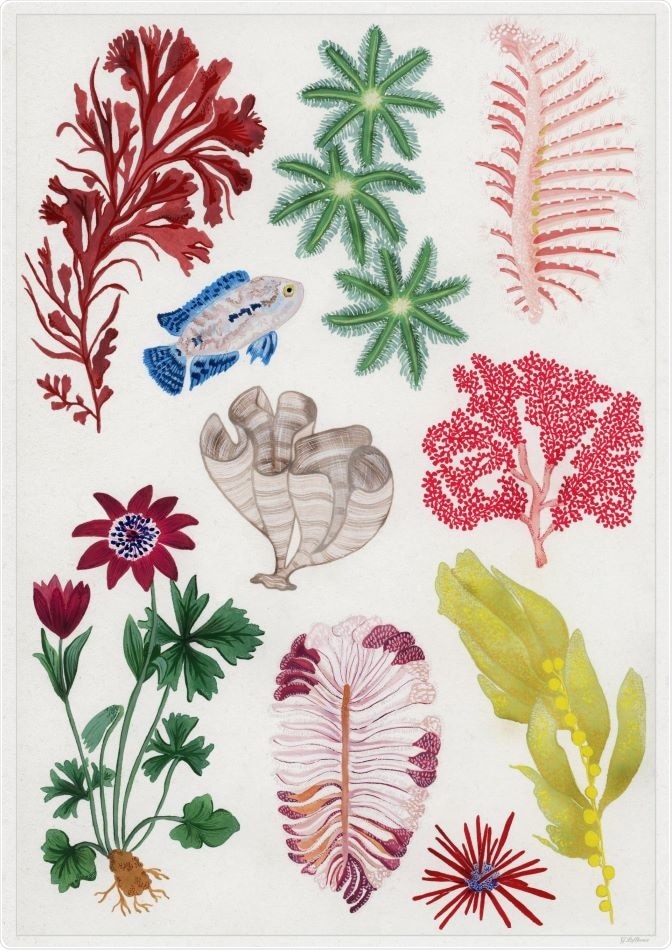The University of Bergen led an international team of scientists to discover how species ranging from crops to corals can prevent harmful DNA damage during evolution.

Organisms without fixed body plans (including octocorals, sea pens, sponges, plants, and fungi) and with fixed body plans (including humans and many animals) may use different strategies to avoid the buildup of damage in their cellular “power stations.” Image Credit: Gemma Lofthouse.
Cells found in humans, plants, fungi, and animals include compartments that generate chemical fuel. These compartments possess their own DNA with instructions for critical cellular machinery. However, this organelle DNA, or oDNA, can undergo mutation and disrupt the instructions, thereby suppressing cells from producing sufficient energy.
A mechanism known as the “bottleneck” in humans and certain other animals enables some offspring to inherit fewer mutant oDNA. This process requires egg cells of mothers to mature early, similar to how a human girl is born with all of her egg cells already present.
A majority of other species, ranging from plants to fungi, do not form these cells as early because their flexible body plans prevent eggs from being “set aside” early during development.
We wanted to know how these organisms might avoid inheriting mutations without a human-like bottleneck.”
Ellen Røyrvik, Geneticist, University of Bergen
The researchers employed mathematical modeling to demonstrate that a process known as gene conversion—the regulated overwriting of DNA—could theoretically cause certain offspring to inherit fewer mutant oDNA without the need for a bottleneck.
They used genome data to identify the machinery that regulates this mechanism in fungi and plants, as well as in algae, sponges, and soft corals—all species without any set body plans.
They also revealed that this machinery is most involved in the parts of plants that produce the seeds for the next generation, implying that it is used to enable certain offspring to inherit fewer mutations.
Taken together, it looks like organisms without a fixed body plan—plants, fungi, corals, sponges, algae—may have adopted gene conversion to deal with oDNA mutations. Humans and other animals can develop egg cells early and use a bottleneck; other organisms can use gene conversion instead.”
Iain Johnston, Study Lead and Associate Professor, Mathematics Institute, University of Bergen
In the future, the researchers intend to investigate how this oDNA overwriting triggers other problems in the species that use it, such as crop plants, where it can induce sterility. Moreover, the researchers have been investigating why these compartments include oDNA, given the possibility of mutational damage.
This study was financially supported by the European Research Council and will be published PLOS Biology.